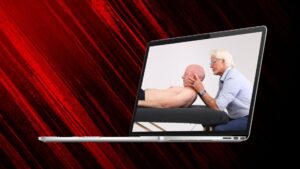Myoskeletal Alignment Techniques, or MAT, is a method of manual therapy developed by Erik Dalton, a leading practitioner and educator in the realm of hands-on pain management, who was inducted into the Massage Therapy Hall of Fame in 2007 and received the One Concept Lifetime Achievement Award in 2012. Dalton comes from a solid foundation in structural integration, so it is no surprise that MAT includes strong elements of this fascia-focused bodywork. In fact, before creating MAT and founding the Freedom From Pain Institute, Dalton studied with Ida Rolf and became a Certified Rolfer® in the early 80s via the Rolf Institute of Structural Integration™.
Dalton chose to take his training further, learning how to create a potent bodywork blend that would focus not only on the fascia, but also on deep tissue massage, joint mobilization techniques and the influence of postural patterns. His motivation for creating the modality that is now known as MAT was because he was searching for a more integrative method for managing pain — a way to better help the long list of clients who came to him suffering from chronic pain. When he realized how effective MAT was in actually alleviating a diverse array of problems associated with pain, Dalton realized the importance of sharing this work with others. In 1998, he released one of the first nationally approved home study courses in the field of manual therapy, called “Myoskeletal Alignment Techniques (MAT).” The huge positive response to this class is what then sparked Dalton’s now prodigious career as an author and educator.
Bringing Structural Integration to the table with MAT
 With MAT, you get to learn key techniques inspired by structural integration and you learn the deep tissue massage, joint mobilization and postural assessment protocols that will take your pain-management skills to a much higher level.
With MAT, you get to learn key techniques inspired by structural integration and you learn the deep tissue massage, joint mobilization and postural assessment protocols that will take your pain-management skills to a much higher level.
From joint mobilization and deep tissue massage techniques to addressing issues within the fascia and working with a crystal clear understanding of the role of posture in pain, MAT has what it takes to help clients who are desperately seeking relief from a vast spectrum of pain conditions. As an example of how Dalton blends basic principles of structural integration into the MAT modality, we can take a look at one of his techniques for working on a client’s stomach area. You can get a glimpse of this work in action in the YouTube clip called “Myofascial, deep tissue, visceral technique for stomach,” which shows Dalton explaining the underpinnings of this method of belly work while demonstrating on his wife and also providing helpful anatomical images.
Taken from Dalton’s in-depth distance learning CE program, called “Home Study for Low Back, Hip and Leg Pain,” this short clip features the beginning of a lesson on how to move the rectus abdominis back toward the midline. Dalton explains that this is actually session five in Rolfing® — and it’s the first technique he likes to begin with when it comes to belly work. Particularly among women who have given birth, the rectus abdominis has a tendency to spread, as the linea alba weakens under pressure and allows the two sides of the rectus to separate. According to Dalton, women who have given birth in the past may frequently present to their manual therapists with low back pain due to the lack of abdominal support that occurs when the rectus abdominis has spread and no corrective measures have been made or succeeded in bringing this muscles back toward its original state.









